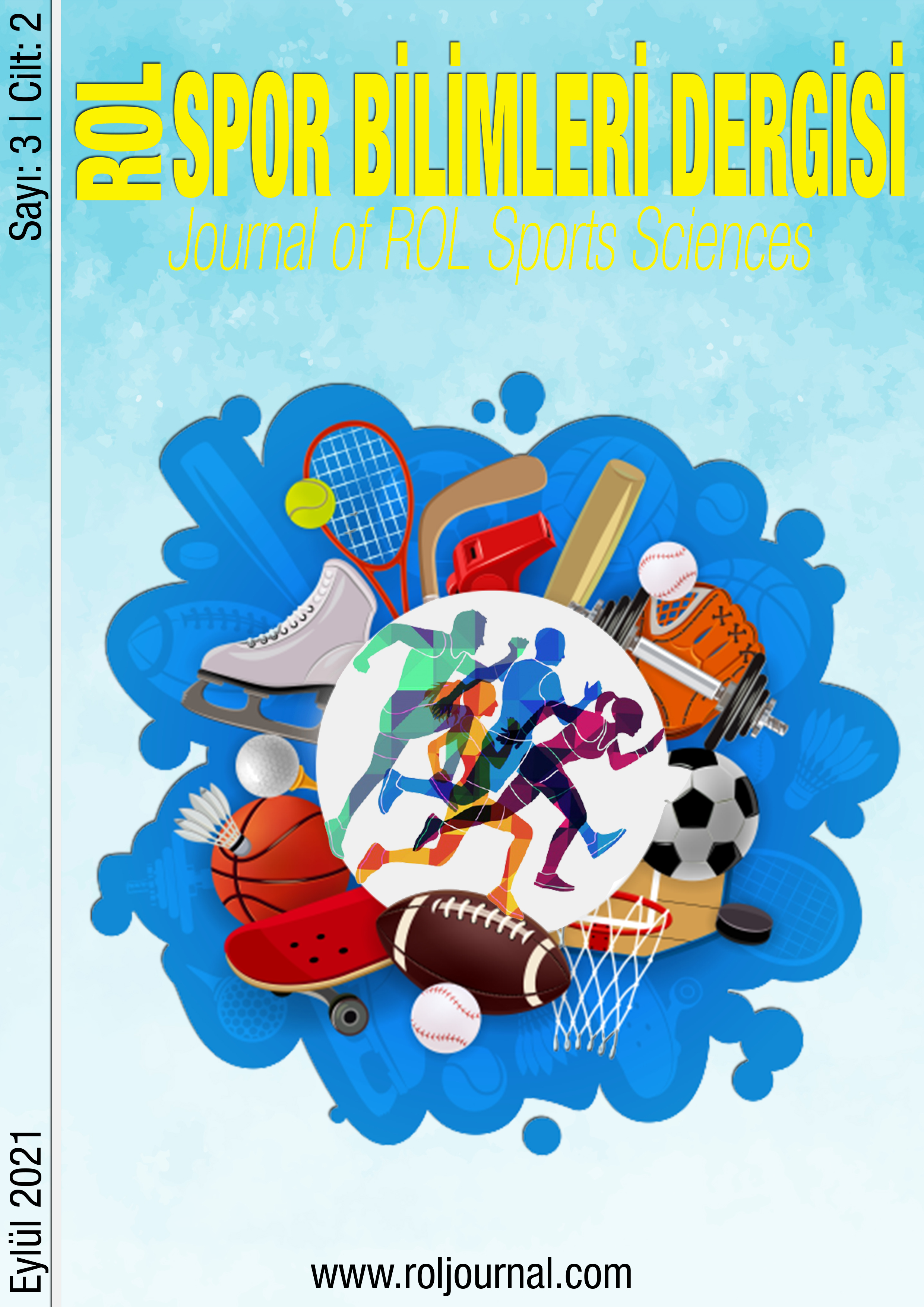THE RELATIONSHIP BETWEEN UNIVERSITY STUDENTS’ PARTICIPATION BARRIERS TO RECREATIONAL ACTIVITIES AND HEALTHY LIFE STYLE BEHAVIORS: TRAKYA UNIVERSITY SAMPLE
DOI:
https://doi.org/10.29228/roljournal.51932Keywords:
Health, Healthy Lifestyle Behaviors, Recreation, Recreation Activities Participation, UniversityAbstract
The aim of this study is to examine the relationships between the healthy lifestyle behaviors of university students and situations that affect the participation in recreational activities, to identify and reveal the obstacles and to examine the effects of factor levels such as age, gender, economic reasons, and academic unit. The study population included the students of various faculties, schools and vocational schools of Trakya University in the 2018-2019 academic year; the sample group consists of 544 students selected by convenience sampling selection method. The data is collected using the Recreative Activities Participation Scale and the Healthy Lifestyle Behavior-II Scale. Most of the participants are from the 21-25 age group (67.65%), normal weight (BMI:18.5- 24.9kg*m-2, 73.35%), and four-year undergraduate education in terms of department type (69.7%). It is observed that the nutritional variable has the lowest score (47.8±10.8), while the physiological characteristics variable has the highest score (87.7±11.3). It is determined that the "economic status" variable with the highest standard deviation (SD=16.2) makes a significant difference between groups in terms of academic units (p<0.05); additionally, age and gender, together with the academic unit variable, are found out to cause a significant difference on physiological characteristics, health responsibilities, physical activity, nutrition and stress management (p><0.05). It has been observed that age group, gender and faculty/college/vocational school variables effectively reflect the socio-demographic and economic characteristics of students and have a significant contribution to the healthy lifestyle and recreational barriers of university students. It is thought that the participation of students in recreational activities is important in terms of physical and mental health, as well as curriculum arrangements, activity programs and sports activities in order to improve the opportunities for participation in activities, and determination of policies for removing the obstacles observed in the research, especially the economic ones.><0,05); additionally, age and gender, together with the academic unit variable, are found out to cause a significant difference on physiological characteristics, health responsibilities, physical activity, nutrition and stress management (p<0,05). It has been observed that age group, gender and faculty/college/vocational school variables effectively reflect the socio-demographic and economic characteristics of students and have a significant contribution to the healthy lifestyle and recreational barriers of university students. It is thought that the participation of students in recreational activities is important in terms of physical and mental health, as well as curriculum arrangements, activity programs and sports activities in order to improve the opportunities for participation in activities, and determination of policies for removing the obstacles observed in the research, especially the economic ones.


